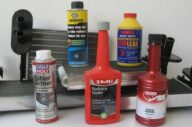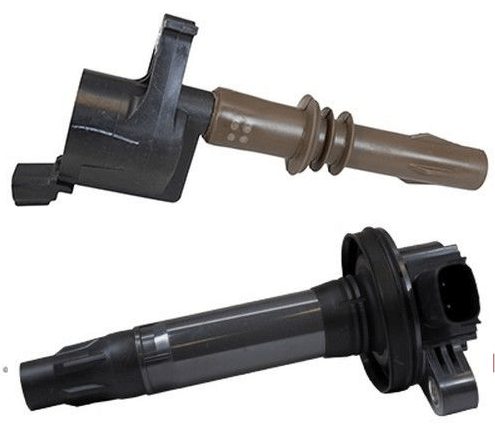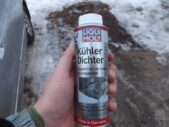
What is the best car radiator sealant
Content
Due to frequent temperature changes, thin-walled tubes begin to leak. Antifreeze flows out due to the appearance of corrosion, which in turn gives rise to microcracks. They either evaporate or flow out a liquid that cools the system.

If a problem occurs during the trip, it will not be possible to immediately replace the damaged part with a new one. Moreover, repairing the cooling system is not easy. It is necessary to completely drain the antifreeze, and also remove the radiator. It's hard to do anything on the road. Therefore, a sealant comes to the rescue, which is used for the cooling system, temporarily protecting surfaces from leaks.
When the defects are eliminated, the driver will be able to drive to the nearest service center in order to solve the problem there at a professional level. It is very important to know how the sealant works, what are its pros and cons, and which one is better to choose for your car.
Radiator sealant types
What is the best car radiator sealant? There are several types of substances that seal cracks. It:
- Powder... Such a sealant is poured into the radiator if antifreeze starts to flow out. Domestic car owners are very fond of using mustard. This is the easiest and cheapest option you can find. Sometimes they even use tobacco and other non-standard means. Dry sealant is able to eliminate small defects up to 1 mm. But at the same time, it is worth remembering that the radiator channels can also become very clogged, which is why the cooling system will not be able to work at full strength.
- Liquid... These are polymers that contain crushed metal particles. The funds are used in order to patch up leaks in the engine block. They are also successfully used in radiators. The composition clings to roughness, gently envelops the surface. It has many positive qualities. One of them is that the sealant is combined with antifreeze. Therefore, when the antifreeze is replaced with a new one, the sealant is removed along with it. In this case, the liquid composition is not able to close large holes.
- Polymer... In the composition of such funds are fibers that maximally adhere the particles to the edges of the cracks. Sufficiently large holes up to 2 mm are closed. Moreover, the effect is achieved in a few minutes after using the sealant.
TOP-5 sealant options: choosing the best
- BBF Super. Manufacturer - Russia. The emulsion closes all holes, from small to large. Almost no deposits. There will be neat polymer plugs in place of the holes that have arisen. A cheap sealant that outperforms the most expensive ones. An ideal combination of excellent quality of work with a low price.
- Liqui Moly. A substance that contains metals. After draining, a precipitate with a metallic sheen can be seen. Very quickly closes holes, which are not subsequently renewed. There are residual deposits, but their level is average. Work efficiency is perfect. Not cheap for the price.

- K-Seal. Created in the USA. Emulsion containing copper powder. Brown in color, does not require replacement of parts after use. Lasts for a long time, but does not trigger soon. There is little residual sediment.
- Gunk Radiator Sealer Super. Made with USA. Fast acting emulsion, brown. The consistency is quite thick. Leaves deposits. If the radiator is old and already dirty, this can lead to bad consequences. It works effectively: holes of all diameters will be closed.
- Fillinn. Russian production. White polymer emulsion. Shake well before use. It takes effect immediately after it enters the tank. High level of residual deposits. It's cheap. Not able to "cure" serious damage. Sometimes it leaks even with minor cracks.
Pros and cons of using radiator sealant
Pros:
- Ease of use. How to apply - you can read the instructions. First you need to allow the engine to cool completely, and then pour the composition into the radiator.
- The speed of repair. It is possible to make temporary repairs on the road if there are no service centers and vulcanizations nearby.
- Compactness. The substance can be put in the trunk: it takes up almost no space. Therefore, it is easy to transport it.
- Low prices. It all depends on the packaging and brand. If you want to take a quality sealant in a small package, it will come out very inexpensively for you.
Cons:
- The sealant is not capable of sealing cracks and crevices permanently. This is only temporary assistance, after which a thorough repair is needed.
- The compound does not cover holes that are larger than 2 mm. Therefore, if a hole the size of a penny appears in the radiator, then even the best sealant will not help you.
- The substance can severely clog the radiator, as a result of which it overheats or even fails.
- Cheap sealants negatively affect the performance of the entire cooling system. Therefore, if you have an expensive car, do not use mustard and other available means. And also - carefully study the instructions of the purchased funds.
How to flush the cooling system after using sealant

- Cool the engine.
- Drain off any fluid present.
- Fill with distilled water along with the flushing agent.
- Turn on the engine so that it runs idle for half an hour.
- Flush the cooling system with warm water.
- Fill with fresh antifreeze.
Video review of Liquid Moli sealant
Questions and answers:
What is the best car radiator sealant? Polymeric. For radiators, this is by far the best sealant category. With their help, cracks of about 2 millimeters in size can be eliminated.
How to properly pour sealant into the cooling system? The radiator cap opens when the engine is off and slightly cooled down. The required amount of sealant is poured (see the manufacturer's instructions).
What can be put into a radiator to fix a leak? Foreign substances have no place in the cooling system, because they can clog the channels of the engine cooling jacket. For emergency elimination of the radiator leak on the way to the service station, you can use special sealants.


